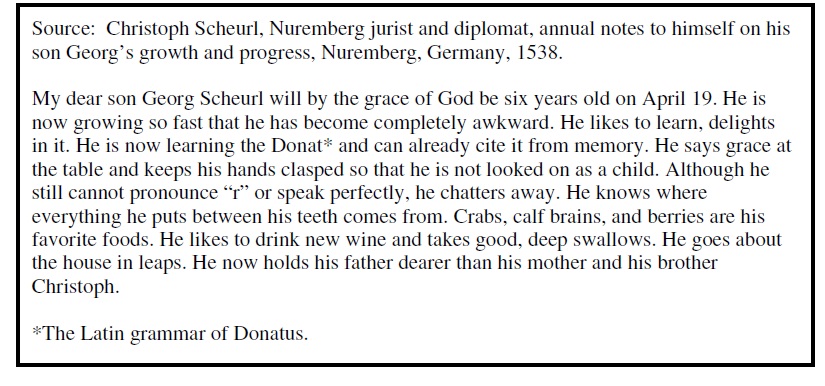I am surprised to see that he was an author and am curious if I will pull up anything about him via a google search (his Wikipedia page). (I did. He is well known.)
Writing an autobiography gives the author a different purpose and audience than if he were writing to a diary, which is where the source we looked at yesterday came from. Knowing that this is an autobiography, I am curious to learn more about the events surrounding its publication. A life story, or autobiography, is a valuable source because it reveals the author’s point of view and details about the society he was part of, which is exactly what we are looking for. Remember, despite students often naive views about bias, bias is the marrow of the discipline, giving historians lots of materials to work with.
This source needs to be placed into the broader context of place, time, and historical era. Sixteenth century Florence, we know, is connected with the Italian Renaissance. To contextualize this source, background knowledge, or information from other sources if part of a source set, needs to be connected to details in the text.
I am immediately interested in the relationship that Cellini has with his so called ‘natural son’, a child of his that was born out of wedlock. There is no mention of the child’s mother. As I stated here, I think source work can be done more thoughtfully and meaningfully using concepts from the social sciences, especially sociology. What are some of the social science connections that this source might connect to?
Sociology Themes/Qs
Roles and Norms
-parenting
-the relationship b/t a father and son when birth occurred outside of marriage
-caretakers who were not biological parents (the wife of the workman)
-how society handled, treated children born out of wedlock
-how a 2 year old was perceived by adults (notions of childhood)
-how unwed women who birthed children were treated
Psychology/Themes Qs
-the desire of a son to be with his father
-the connections/meaning associated with having a biological connection to another person
Law
-how paternity was determined in the 16th century
Geography
-How far was he travelling?
Economics
-How much could he get for the amount of money he had?
-How much did the woman nursing his son receive? Was that her job?
Also, I wonder, what are some ways I might connect this source to today’s source?  The two sources show us that not all children inhabited the same homes as their biological parents. We also can use these two sources to examine the different ways that children were treated based on whether they were born inside of or outside of marriage.
The two sources show us that not all children inhabited the same homes as their biological parents. We also can use these two sources to examine the different ways that children were treated based on whether they were born inside of or outside of marriage.
Some additional sources that may be of interest: http://www.academia.edu/1049664/Autobiographical_Texts_as_Historiographical_Sources_Rereading_Fernand_Braudel_and_Annie_Kriegel_Biography_2006_
No comments:
Post a Comment